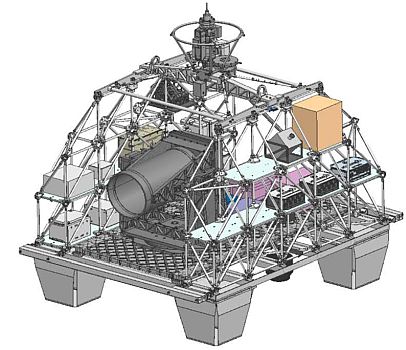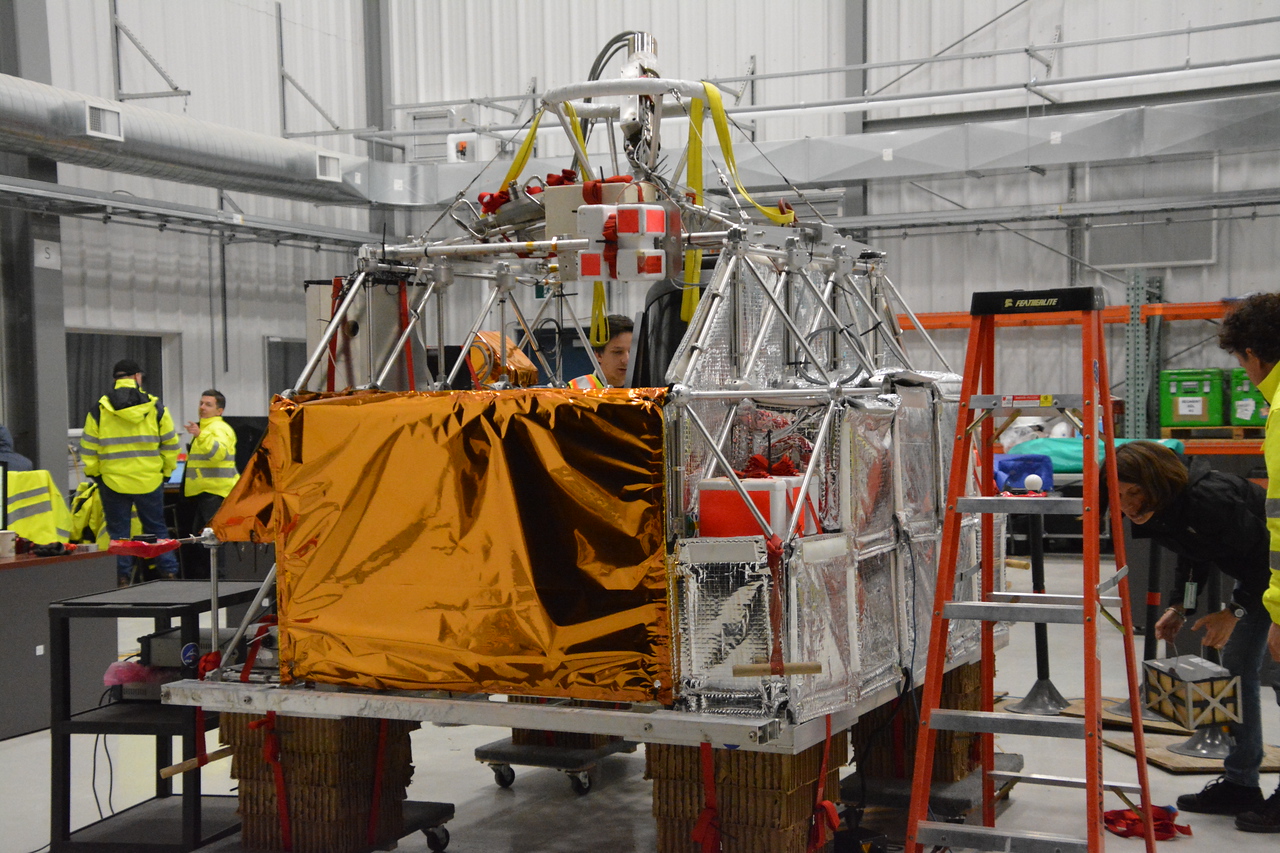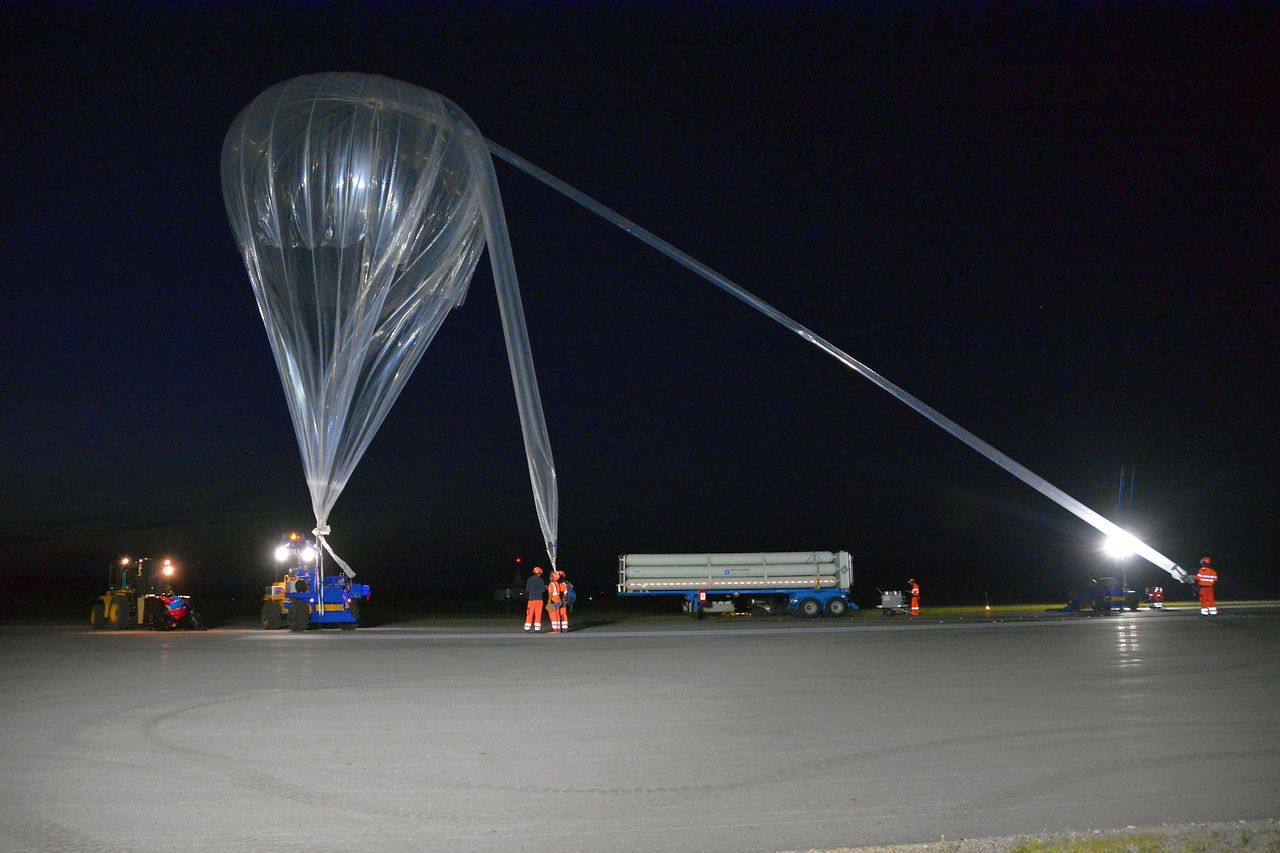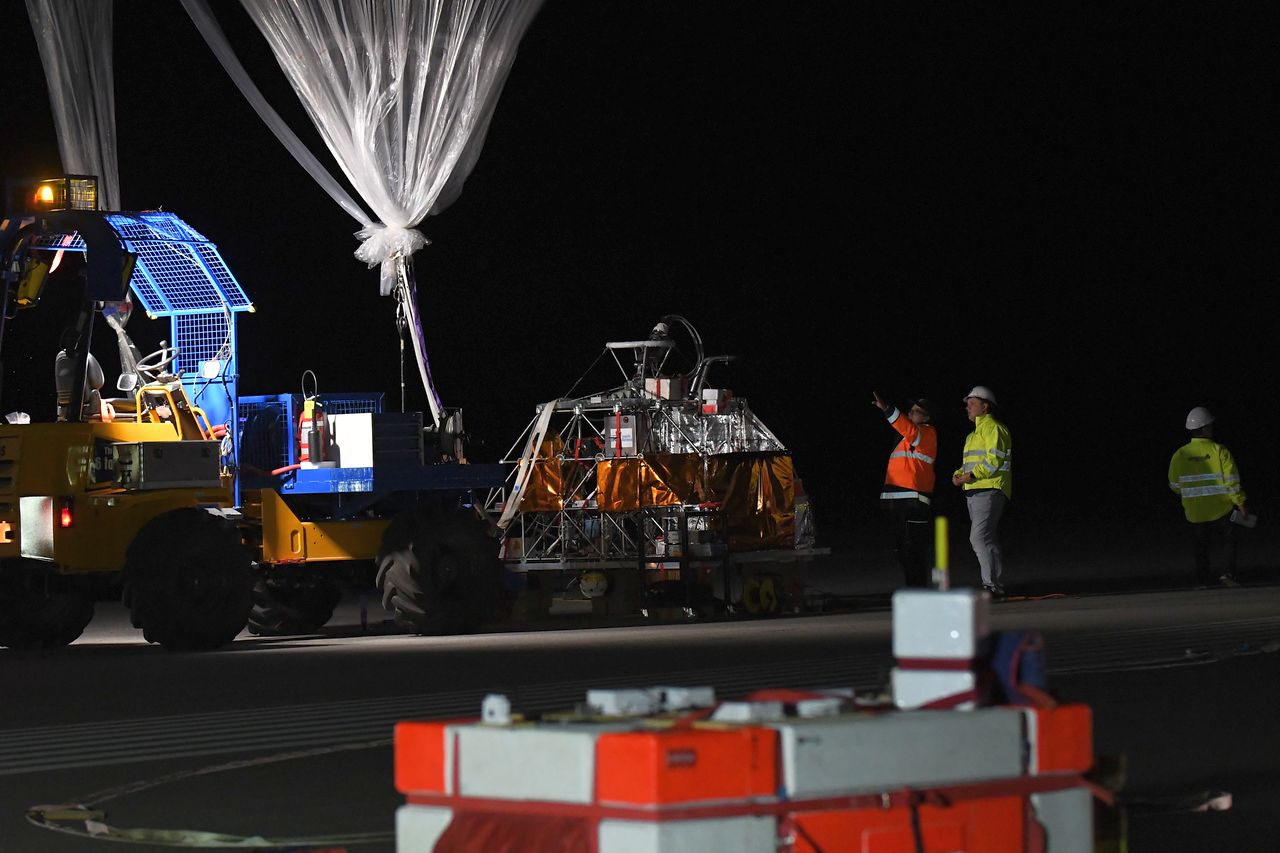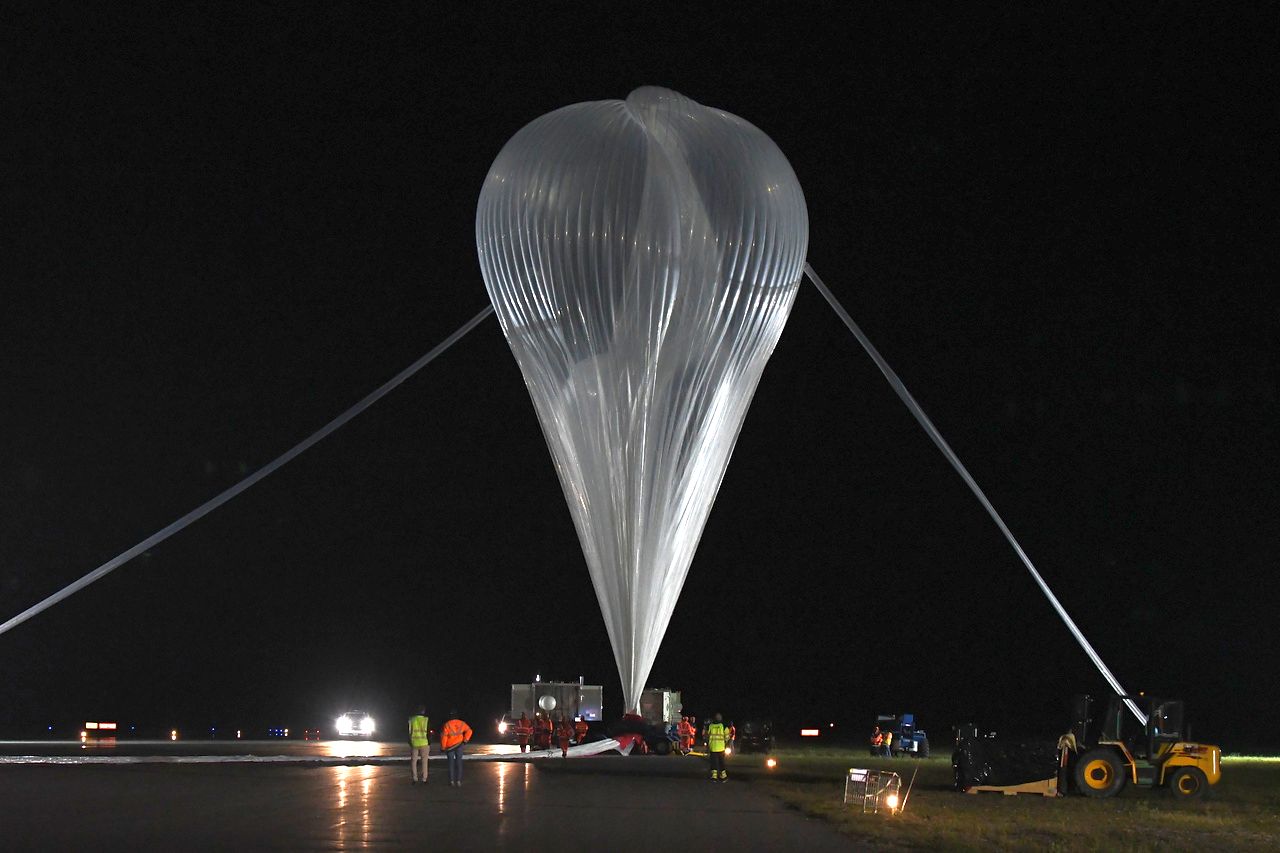Purpose of the flight and payload description
The HICIBAS mission was the third flight of the Strato Science 2023 campaign aimed to perform a series of experiments in a multi-instrument platform, mainly developed in Canada. At left we can see an scheme of distribution of the payloads in the gondola (click to enlarge).
It used as platform CARMENCITA a multi-payload stabilized gondola originally introduced in late 2012 by the Nacelles Pointees (Pointed Platforms) CNES team. The platform used in this flight was developed and operated by the Canadian Space Agency based on the original CNES specification. The platform was developed with several concepts in mind: modularity to allow the inclusion of several instruments devoted to the same or different research areas in one mission, reusability to overcome the difficult to adapt a platform specifically designed around an instrument to another (reducing costs and developing times), and finally cargo volume which is maximized to allow the installation of many instruments.
Onboard the gondola were installed the following instruments:
HiCIBaS acronym for High Contrast Imaging Balloon System a balloon-borne telescope whose main goal is to demonstrate the usability of high contrast imaging equipment on board a stratospheric balloon flight. The instrument was developed at the Université Laval in Québec, Canada.
RSOnar or Resident Space Object Near-space Astrometric Research a technology demonstration payload consisting of a star tracker-like, wide FOV camera combined with commercial off-the-shelf hardware to image resident space objects from the stratosphere. It was developed at the Lassonde School of Engineering of the York University.
HABLAN or High Altitude Balloon Light At Night an experiment that uses multiple colour cameras to picture a city at different viewing angles in the three RGB bands (Red, Green and Blue. The ultimate goal of the project is to provide better remote sensing data as inputs to numerical radiative transfer models. It was developed at the Département de physique, Cégep de Sherbrooke, Canada
TRASH acronym for Technologies for Recognition and Awareness of Space Debris an experiment developed at the Université Laval
BALLOONBUS a radiation detector with real-time communication developed by the INP from Bordeaux, France
Finally was also included a balloon gondola position tracking experiment aimed to show that it is possible to track a balloon payload to millimeter precision developed at the The Department of Physics, Engineering Physics & Astronomy of the Queen's University from Canada
Details of the balloon flight
Balloon launched on: 8/22/2023 at 4:53 utc
Launch site: Timmins Stratospheric Balloon Base, Ontario, Canada
Balloon launched by: Centre National d'Etudes Spatiales (CNES)
Balloon manufacturer/size/composition: Zero Pressure Balloon model 400z Hemeria 400.000 m3
Flight identification number: NIMBUS-3
End of flight (L for landing time, W for last contact, otherwise termination time): 8/22/2023 at 10:20 utc
Balloon flight duration (F: time at float only, otherwise total flight time in d:days / h:hours or m:minutes - ): 5 h 10 m
Landing site: 56 km W of Gogama, Ontario, Canada
External references
- HICIBAS website
Université Laval - A Dual-Purpose Camera for Attitude Determination and Resident Space Object Detection on a Stratospheric Balloon Sensors 2024, 24(1), 71;
- Information on the Strato Science 2023 balloon launch campaign Canadian Space Agency website
- Retour sur la campagne Strato-Science 2023 CNES website
- Scientific instruments developed at Lassonde fly high above the clouds during Strato-Science 2023 campaign York University website
- Technology Demonstration of Space Situational Awareness (SSA) Mission on Stratospheric Balloon Platform Remote Sens. 2024, 16(5), 749
- Telescope on Tuesday morning balloon flight could help study far away planets Timmins Press
16335If you consider this website interesting or useful, you can help me to keep it up and running with a small donation to cover the operational costs. Just the equivalent of the price of a cup of coffee helps a lot.

